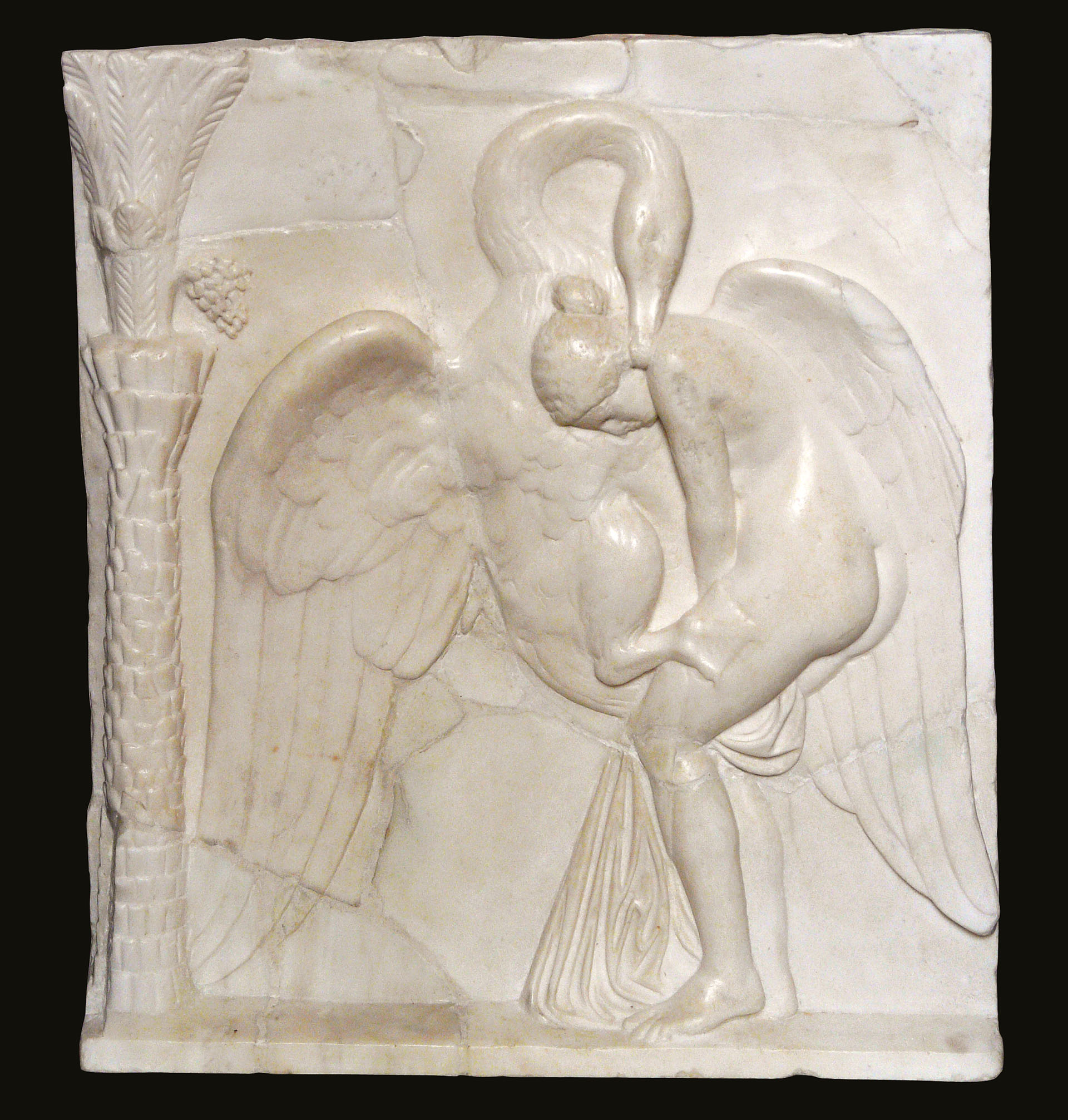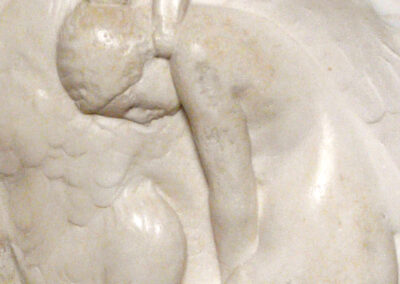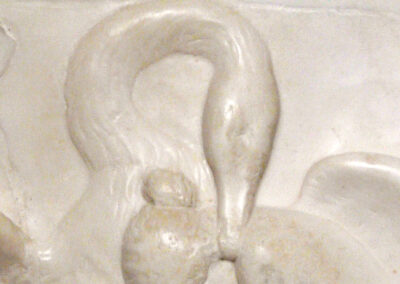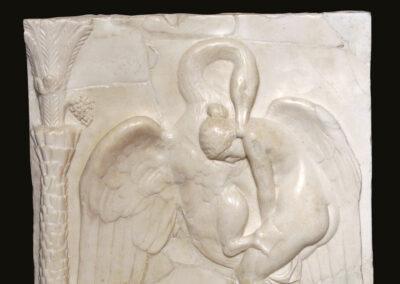Relief from the 2nd century AD depicting the episode of Zeus' metamorphosis into a swan in order to possess Leda. This myth, which replaces an earlier hierogamy of the same god with Nemesis, was immortalised by Euripides in the 5th century BC and became a popular theme in Hellenistic and Roman art.
According to the mythological tale, while Leda, wife of the Sparta king Tindarus, was bathing in a pool near the river Eurotas, she was seduced and possessed by a swan of resplendent whiteness that pretended to be pursued by an eagle. That same night the queen of Sparta was united to her husband, and in due course Pollux, Helen, Castor and Clytemnestra were born, the first two immortal, as children of Zeus, and the last mortal, the sources differing as to the nature of Castor.
Of the three iconographic types to which the myth has given rise, this one represents the least common, the moment of the physical union of Leda and Zeus metamorphosed into a swan, the other two being the meeting of Leda with the Swan and the hatching of the eggs from which the characters mentioned above are born.
This version is a Roman copy of an Attic model from the Hellenistic period that was restored during the Renaissance, when small missing parts were reintegrated.





